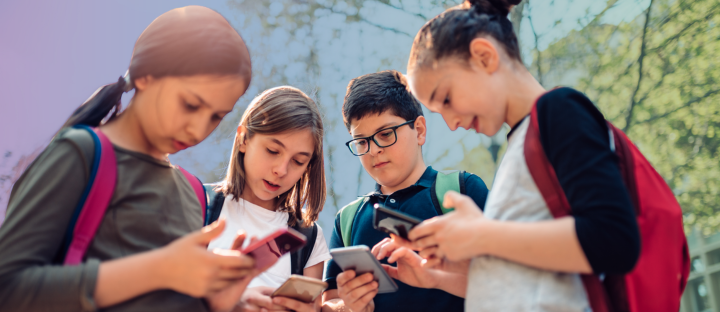Related Articles:
- The Screen Time Dilemma: Effects on Childhood Development and Practical Solutions
- Strategies for Teaching Kids About Online Safety
- Educating Students on the Impact of Social Media on Mental Health and Substance Use
Smartphones are as common as backpacks in today’s classrooms, but should they be? In New Jersey, that question is at the center of a growing debate among parents, teachers, and lawmakers, with serious implications for students’ mental health, academic performance, and safety.
The Push for a Statewide Ban
Earlier this year, Governor Phil Murphy publicly backed a statewide policy that would make New Jersey schools “phone-free zones” during instructional time. His announcement followed a string of alarming reports highlighting the impact of social media on youth mental health and the rising concern over classroom distractions and cyberbullying.
A tragic case in Middletown, where a 14-year-old student died by suicide after being bullied online, brought urgent attention to the issue. While extreme, her story illustrates the broader concerns educators and families face: smartphones aren’t just a distraction; they can be a vehicle for harm.
The legislation now advancing in Trenton doesn’t call for a universal ban across all contexts. Instead, it would require every district to develop its own policies limiting the use of phones and connected devices during class. Details such as whether phones can be kept in lockers, used at lunch, or brought into school at all will be left up to local leaders.
💡 Tip
Parents, the next time you are about to send a quick, trivial text message to your students while they’re at school, stop.
It might take them only 10 seconds to respond with a thumbs-up emoji, but their brain will need 20 minutes to refocus on the algebra, history, or physics lesson in front of them.
Source: Boston University
Teachers and Parents Speak Out
Across the state, educators are largely united in calling for stricter limits. Many say they are tired of competing with TikTok, YouTube, and text messages for students’ attention. The Garden State Coalition of Schools reports near-universal support for smartphone restrictions among teachers.
But the conversation is more complex among parents. Some support limits on screen time but balk at full bans, especially in light of school security concerns. Others worry about how their children would reach them in an emergency or if a student needs to manage a medical condition during the day.
Assemblywoman Rosy Bagolie, a public school principal and co-sponsor of the legislation, says these concerns are valid and addressable. Her bill requires schools to create policies in collaboration with families and educators. In her own school, students drop their phones in a collection basket each morning and retrieve them at day’s end. If a child needs to call home, they use the main office, just as they did before smartphones were common.
Mental Health and Screen Time
There is growing scientific consensus that frequent use of social media correlates with increased rates of anxiety, depression, and body image issues among teens. The U.S. Surgeon General has warned that young people spending more than three hours per day on social platforms are at double the risk of poor mental health outcomes.
For many students, that screen time is happening during the school day. While banning phones won’t solve the broader digital health crisis on its own, it can help create space in schools for deeper focus, peer interaction, and in-person support from teachers and counselors.
As Charles Gelinas, a member of the Westfield Board of Education, noted, even phones that are turned off can continue to pull a student’s focus. Just knowing the phone is nearby can be enough to distract from learning.
A Call for Common-Sense Collaboration
There is no one-size-fits-all policy that will work for every school or every student. Urban and rural districts have different needs. So do students with chronic health conditions or those experiencing bullying. A thoughtful, collaborative approach is essential.
At Wellspring, we encourage ongoing dialogue between schools, families, and students themselves. Technology is not going away, but how we use it, especially in learning environments, can make all the difference.
Whether a district collects phones in baskets or restricts their use during certain periods, the ultimate goal should be to protect student well-being while fostering academic success and maintaining safe, supportive schools.
As this conversation continues across New Jersey, we remain committed to helping schools and communities develop healthy, prevention-oriented policies that prioritize the needs of young people, mind, body, and heart.

